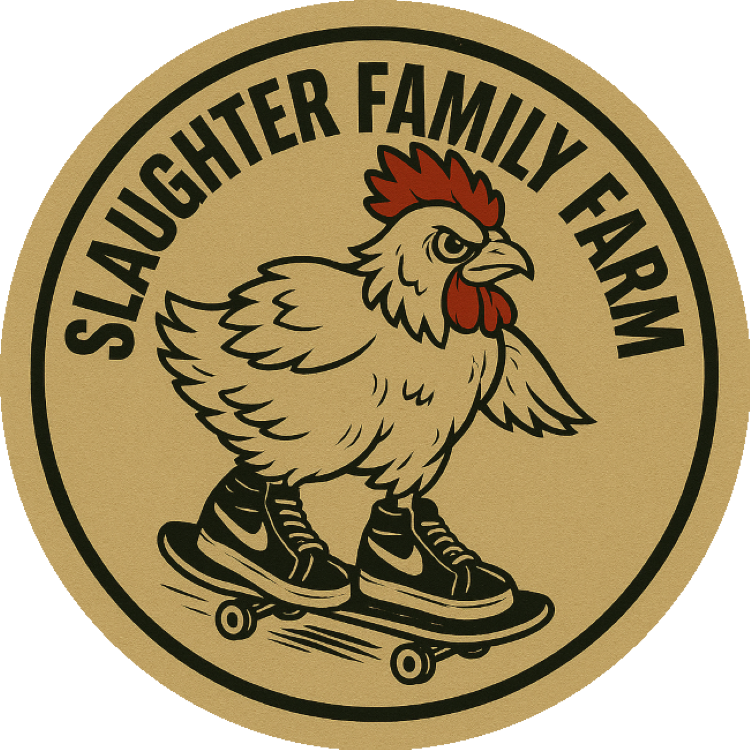Smart Shopping at the Farmers Market: How to Spot Quality Products
posted on
April 10, 2025
Smart Shopping at the Farmers Market: How to Spot Quality Products
Farmers markets are more than just a place to buy fresh, local products — they’re vibrant communities where small-scale farmers and producers share their hard work and passion for quality food. While there’s healthy competition, there’s also strong camaraderie among vendors committed to quality, sustainability, and ethical farming. Here’s how to shop with confidence and make sure you’re getting the best for you and your family.

1. Pricing: Know What to Expect
Prices at the farmers market will vary (not by much), but understanding what’s reasonable is key — especially for pasture-raised, non-GMO products. If prices seem unusually low for grass-fed beef, non-GMO pasture-raised chicken, or pasture-raised pork, it could be a warning sign. If one farmer's prices are dramatically lower — like one-third to half the price of others — it’s a huge red flag. This often points to shortcuts in farming practices or misleading claims about quality and feed.
Incorrect Feed Profiles & Distillers Grains: The “Cheap” Alternatives for Broiler Chickens
When broiler chickens are fed hog feed or distillers grains, they don’t receive the correct balance of nutrients they need for healthy growth and muscle development. The result? An inferior, nutritionally deficient product.
Why Hog Feed Produces Low-Quality Chicken
- Poor Protein & Amino Acid Profile: Broilers need specific proteins and amino acids. Hog feed falls short, resulting in less muscle, more unhealthy fat, and lower overall nutrition.
- Wrong Fats: Hog feed skews the fat profile, reducing healthy omega-3 content.
- Missing Vitamins & Minerals: Critical nutrients like vitamins A, D, and calcium are lacking, weakening bird health and meat quality.
- Slow, Inefficient Growth: Birds grow poorly, yielding less and lower-quality meat.
- Inferior Meat Quality: Tougher, less flavorful, and nutritionally empty compared to properly fed, pasture-raised chicken.
Distillers Grains: Cheap Feed, Cheap Bird
Some farmers try to “balance” hog feed by adding distillers grains — a cheap ethanol byproduct. While it fattens broiler chickens up fast, it’s high in fiber and low in the essential amino acids broilers need for healthy muscle growth.
The Result: You get a plumper bird, but not a healthy one. These chickens have more unhealthy fat, less lean muscle, and significantly lower nutritional value.
Cost Comparison: Distillers grains can cut production costs in half, compared to properly raised, non-GMO, pasture-fed chickens. But customers end up with an inferior product — while mistakenly believing they’re getting premium quality at bargain prices.
Price Point Reality: If pastured chicken cuts are selling for $4–6/lb, it’s raised on the shortcuts described above — or worse, it’s not honestly labeled at all. This price is below the true cost of production, even before labor is considered. It's important to remember that quality costs money, and if it sounds too good to be true, it probably is.


2. Do Your Research: Lack of Online Info
Reputable farms are usually proud to share details about their practices. If a farm has little information online or only shows a few animals while claiming high production, start asking questions. A lack of transparency could mean they’re reselling animals from sale barns rather than raising them on their farm.
3. Beware of Buzzwords
Labels like “pasture-raised” or “heritage breed” sound great but are often misused. Some farmers buy livestock from poor conditions at sale barns and rebrand them as premium products. If the story feels too good or too vague, it’s time to dig deeper.
4. The Myth of “Cheaper Butchers” or “Cheap Non-GMO Feed”
Claims of saving big by using out-of-state processors or feed mills are often a cover for cutting corners.
Butchering:
Good processors who care about animal welfare and quality cost more, not less. Cheap, ethical processing simply doesn’t exist — and in many states, access to poultry or red meat processors is extremely limited, with long wait times.
Feed:
Grain prices are fairly standardized across regions, especially in the Midwest and Southeast. Whether conventional or non-GMO, grain requires farming, trucking, storage, and milling. If someone claims they’re getting non-GMO feed at half price, either the feed is very poor quality (by poor quality, I mean extremely poor quality) or they’re not being transparent. "You are what you eat, eats."
5. Transparency is Everything
Good farmers are open about their methods and are happy to explain feeding, care, and processing practices. If they dodge your questions or give vague answers, keep digging. Ethical farmers value trust and know that educated customers strengthen the entire farming community.

6. Support the Farming Community
Farmers markets thrive on relationships, not just sales. Honest farmers respect their peers and often recommend other trustworthy producers. By supporting transparent, ethical farmers, you’re helping to build a stronger, healthier local food system.
"I would rather go bankrupt doing this honestly than be wealthier than I am now doing it dishonestly."
- Justin Slaughter



